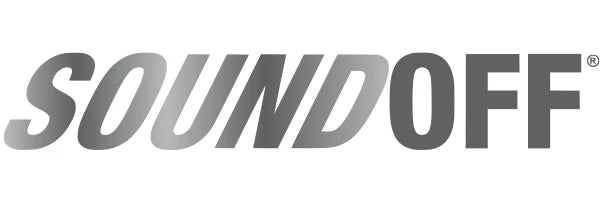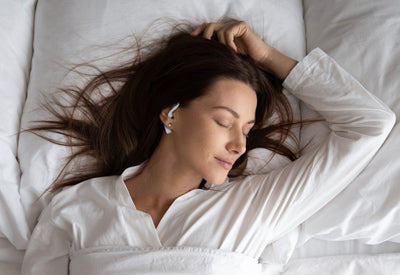Introduction:
Tinnitus, often described as a ringing, buzzing, or hissing sound in the ears, affects millions of people worldwide. It can be a challenging condition to manage, impacting quality of life and daily functioning. While there is no universal cure for tinnitus, various management techniques have been developed to alleviate its symptoms. Once such technique gaining recognition is the use of Pink Noise as a tool for masking tinnitus.
Understanding Tinnitus
Tinnitus is not a disease itself but rather a symptom of an underlying condition, such as hearing loss, exposure to loud noise, or even stress. It manifests as the perception of sound in the absence of any external stimulus. Individuals experiencing tinnitus often report hearing sounds that vary in pitch, volume, and duration, which can be highly distressing and intrusive.

The Role of Masking
One approach to managing tinnitus is through masking, a method that involves introducing external sounds to cover up or distract from the perceived tinnitus noise. By providing an alternative auditory stimulus, masking can effectively reduce the perception of tinnitus, offering relief to those affected by the condition.
What is Pink Noise?
Pink Noise is a type of sound characterized by equal energy per octave, resulting in a consistent power distribution across the audible frequency spectrum. Unlike white noise, which has equal energy per frequency, Pink Noise decreases in intensity as frequency increases, giving it a softer, more natural quality. Pink Noise is often described as resembling the sound of steady rainfall or a gentle breeze through leaves.

How Pink Noise Works for Tinnitus Masking:
Pink Noise works by introducing a soothing, consistent sound that can help mask the perception of tinnitus. By providing a continuous auditory background, Pink Noise can make the ringing or buzzing associated with tinnitus less noticeable or intrusive. This masking effect can provide temporary relief from tinnitus-related distress and improve overall well-being.
Scientific Evidence Supporting Pink Noise
Research into the effectiveness of Pink Noise for tinnitus masking is ongoing but promising. Several studies have demonstrated its potential benefits:

- An article in the ncbi (2015): The music therapy based on “pink noise” in this study can effectively treat tinnitus, which is consistent with the conclusion recognized by international audiologists that fractal music is superior to “white noise” for tinnitus. treatment https://www.ncbi.nlm.nih.gov/pmc/articles/PMC10703671/
- A Study by Folmer et al. (2013): In this study, researchers examined the use of sound therapy, including Pink Noise, for managing tinnitus. The findings suggested that sound therapy, when customized to individual preferences and needs, could significantly reduce the impact of tinnitus on daily life, improving sleep quality and overall well-being.
- A Meta-Analysis by Hobson et al. (2012): This meta-analysis reviewed multiple studies on the efficacy of sound therapy for tinnitus management. While the analysis encompassed various types of sound stimuli, including white noise and nature sounds, Pink Noise emerged as a promising option for tinnitus masking, particularly when used in conjunction with other therapeutic interventions.
Practical Applications of Pink Noise
Pink Noise an be delivered through various devices and formats, making it accessible for induvial seeking relief from tinnitus. Some common applications include:
- Sound Machines: These devices produce continuous Pink Noise, allowing individuals to adjust the volume and tone to their preference. Sound machines are often used during sleep to mask tinnitus and promote relaxation.
- Mobile Apps: There are numerous smartphone apps available that offer Pink Noise and other sound therapy options for tinnitus relief. These apps typically allow users to customize their listening experience and integrate sound therapy into their daily routines.
- Online Platforms: Several online platforms and streaming services offer Pink Noise tracks and playlists designed specifically for tinnitus masking. Users can access these resources from their computers or other internet-enabled devices.
- Pink Noise Earbuds: SoundOff Noise Masking Earbuds play a soothing Pink Noise. While they were originally invented to mask snoring, many tinnitus sufferers have found they give relief. One customer talks about wearing one earbud during the day so he hears the Pink Noise rather than the “ringing in his ears”. Not only is he not annoyed with the tinnitus, he can also still go about his every-day life answering phone calls and hearing all the things he “needs” to hear. You can learn more about SoundOff Noise Masking Earbuds here.
Tips for Using Pink Noise Effectively
When using Pink Noise for tinnitus masking, consider the following tips to maximize its effectiveness:
- Consistency: Incorporate Pink Noise into your daily routine, especially during quiet or restful periods such as sleep or relaxation sessions.
- Volume Control: Adjust the volume of the Pink Noise to a comfortable level that effectively masks the tinnitus without causing additional discomfort or hearing damage.
- Personalization: Experiment with different types of Pink Noise, as well as other sound therapy options, to find what works best for your individual needs and preferences.
- Patience: While Pink Noise can provide immediate relief for some individuals, it may take time to experience its full benefits. Be patient and persistent in integrating Pink Noise into your tinnitus management strategy.
Conclusion
Pink Noise offers a promising avenue for individuals seeking relief from tinnitus-related distress. By providing a soothing auditory background, Pink Noise can effectively mask the perception of tinnitus, reducing its impact on daily life and improving overall well-being. While further research is needed to fully understand its mechanism and optimize its use, Pink Noise stands as a valuable tool in the multifaceted approach to tinnitus management. With its accessibility and versatility, Pink Noise holds the potential to empower individuals in their journey toward tinnitus relief and improved quality of life.





























